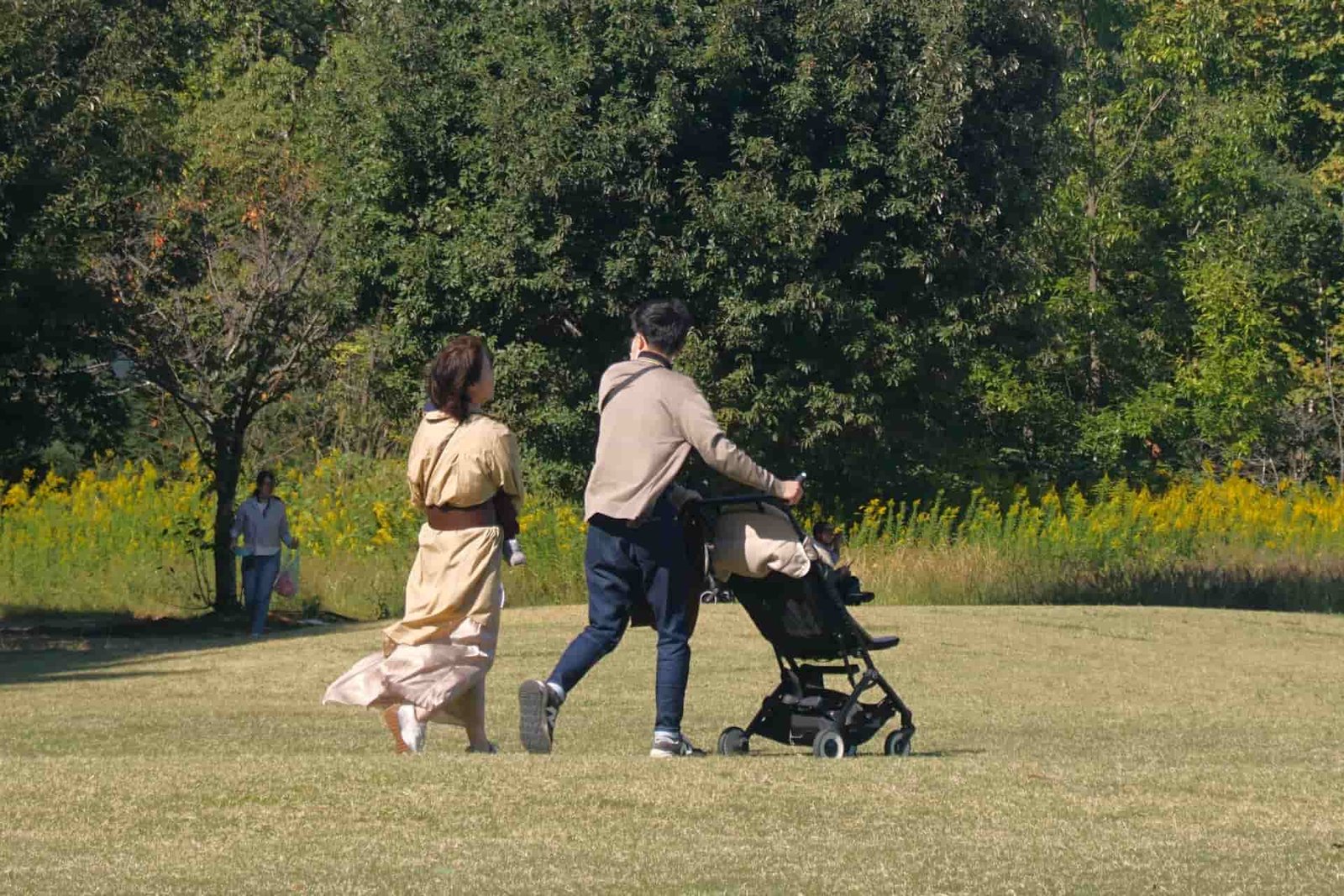How the Role of Fathers is Changing in Japan
For decades, Japanese fathers were absent breadwinners, while mothers ran the household.
Today, many younger dads want to change that, but old habits and rigid workplaces are proving tough obstacles.
If you are an early riser (or recent arrival in Japan suffering from jet lag), you are likely to encounter fathers ferrying kids to school on the ubiquitous mamachari bikes.
The name is short for “mom’s chariot, and with good reason. Past the morning school run, many fathers don’t see their children again until just before they go to bed, or the following morning for the next school run.
For much of postwar Japan, the prevailing fatherhood model has been that of the salaryman father: suited, absent from domestic life, often working six-day workweeks and stumbling home long after the children were in bed.
Many younger fathers have little to no interest in following in their fathers’ footsteps, instead wanting to spend more time with their children and spouses. However, the existing models are proving resilient and difficult to change.
Cracks in the absent model
Researchers have long noticed shifts in the priorities of Japanese fathers. A 2007 JMRN study observed that young fathers wanted to play a more proactive role in parenting, while mothers were increasingly asserting independence, wanting more from life than the label okaasan (mother, often used about stay-at-home mothers).
Simultaneously, continually dropping birthrates put a thick line under fundamental shifts in relationship dynamics and desires from both men and women.
In 2010, the Ministry of Health, Labour and Welfare launched the Ikumen Project, a portmanteau of “ikuji” (childcare) and “ikemen” (hunk). The campaign combined posters of studly dads with policy goals, aiming to normalise men spending time with their children and, not incidentally, boost the birthrate.
Research has shown that households where men share childcare duties are more likely to have a second child, and that women in these households are more likely to remain in the workforce.
But the Ikumen push often felt like a top-down PR exercise. Anthropologist Hannah Vassallo found that many fathers disliked the term, saying it cast them as hypermasculine “heroes” rather than normal parents.

Workplaces lag behind
This was far from the only pushback experienced. Workplaces, especially the permafrost of middle management, have shown stubborn resilience to change.
On paper, Japan has one of the world’s most generous paternity leave systems, offering up to 12 months of paid leave, provided by the government. In practice, uptake long hovered near zero, with rates of 0.12% in 1996, 1.9% in 2012, and 7% in 2017. The government set a goal of 13% by 2020, and the figure finally reached 17.13% in 2022. However, we are far behind on the 50% target by 2025.
Why the gap? Many men take “hidden leave,” burning vacation days instead of formal childcare leave to avoid career repercussions. A 2015 survey found that 26.6% of men avoided paternity leave because the workplace atmosphere discouraged it.
Pandemic shock to the system
For many fathers, COVID-19 proved a turning point. With remote work keeping them at home, men suddenly saw the invisible labour of cooking, cleaning, and childcare – and perhaps also some of the values and enjoyment in taking a more active part in these functions, at least to some degree.
A pandemic survey of 600 fathers found that those working remotely reported higher levels of family involvement and satisfaction, even though women still bore the heavier load.
Wives spend, on average, 4 hours 23 minutes a day on housework, while husbands spend 37 minutes. Even on holidays, wives do four times more. And when it comes to “invisible housework” like meal planning or managing supplies, 90% still falls to women. (.
This is partly down to the family patterns, which remain stubbornly 1950s-style for many. Women stay at home, and the men go to work, facing long working hours and brutal commutes, which don’t help. One study found that 36% of fathers of preschoolers spent 12 hours or more every day on work and commuting, leaving little time and energy for household chores.

Consumer dads and cultural shifts
However, much is changing, and marketers have taken note of the shift. Magazines like FQ Japan portray fatherhood as aspirational, highlighting strollers with high-tech suspension and “Papa mo OK” gadgets for big hands.
Editor Masaki Honda argues that dads are channelling money once spent on hobbies into childcare purchases. Functionality and design, not price, drive their decisions.
Yet dads themselves often reject the government’s glossy “Ikumen” imagery. They prefer carving out their own roles—attending PTA meetings, joining online parenting groups, or simply spending quality time with their kids on weekends.
These changes may seem small for some countries, but for Japan, it may not be overreaching to argue that it is the dawn of a new era of fatherhood.
Each era in Japan has produced its own archetype of fatherhood: the Meiji patriarch, the Showa salaryman, the Heisei “Ikumen.” In the Reiwa era, fathers are more engaged than ever before—but often in defiance of corporate culture rather than thanks to it.
The question is whether workplaces, policies, and social norms will catch up. Until then, Japanese fatherhood will continue to be a balancing act between tradition and change, aspiration and exhaustion.
Photos:
